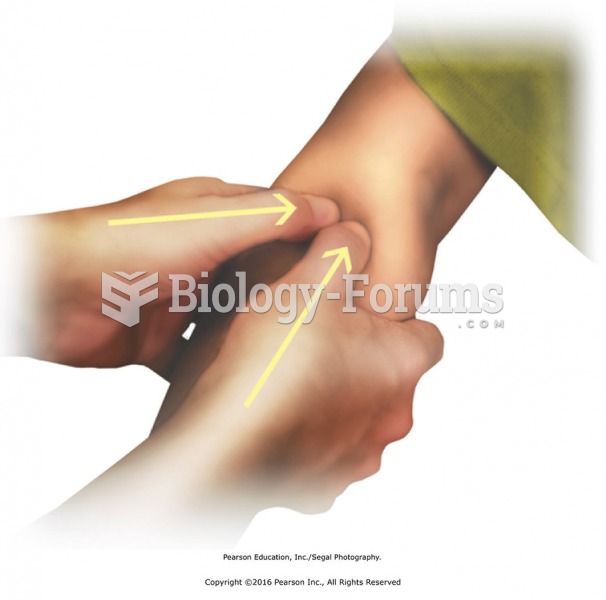|
|
|
The FDA recognizes 118 routes of administration.
Allergies play a major part in the health of children. The most prevalent childhood allergies are milk, egg, soy, wheat, peanuts, tree nuts, and seafood.
To combat osteoporosis, changes in lifestyle and diet are recommended. At-risk patients should include 1,200 to 1,500 mg of calcium daily either via dietary means or with supplements.
A strange skin disease referred to as Morgellons has occurred in the southern United States and in California. Symptoms include slowly healing sores, joint pain, persistent fatigue, and a sensation of things crawling through the skin. Another symptom is strange-looking, threadlike extrusions coming out of the skin.
A good example of polar molecules can be understood when trying to make a cake. If water and oil are required, they will not mix together. If you put them into a measuring cup, the oil will rise to the top while the water remains on the bottom.
 Starting at the waist, apply circular two-handed petrissage over the entire right side. Keep hands ...
Starting at the waist, apply circular two-handed petrissage over the entire right side. Keep hands ...
 Press the back muscles, using the palms or loose fists to apply compression. Do not hyperextend your ...
Press the back muscles, using the palms or loose fists to apply compression. Do not hyperextend your ...





